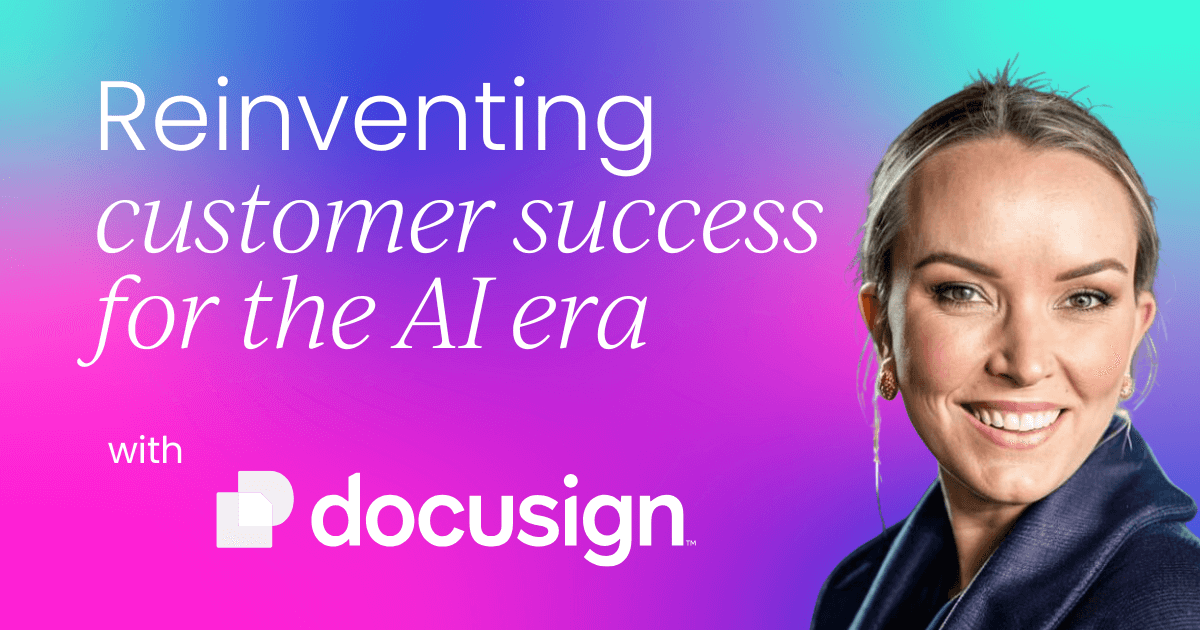Customer expectations are evolving – and fast. In a world where speed, convenience, and personalization reign supreme, customer success teams are under more pressure than ever to deliver seamless, meaningful experiences at scale.
Enter artificial intelligence (AI): the powerful tool that promises efficiency, insight, and automation.
But as we embrace technology to enhance our workflows, we can’t afford to lose sight of the emotional intelligence that sits at the heart of every lasting customer relationship.
Because the truth is, customers don’t just want solutions – they want to feel understood.
In this article, we’ll explore:
- How to strike the right balance between AI and EI in Customer Success
- Where automation enhances strategy – and where it can’t replace the human touch
- Practical use cases for AI in customer research, risk, and growth
- Why emotional intelligence remains your strongest competitive advantage
- Actionable ways to empower your CSMs with both data and empathy
Empower your CSMs through AI-driven intelligence
It’s no secret that your customers are demanding more from your customer success (CS) teams than ever before – and so is the business. Expectations are rising, while budgets and team sizes often shrink. As leaders, we’re being asked to deliver more with less.
To meet this challenge, we must embrace technology as a true enabler – specifically, by empowering our Customer Success Managers (CSMs) with AI-driven tools to reach new heights.
One of the most effective entry points is using AI to generate customer intelligence. Customer research and intelligence are foundational to the role of any prepared CSM – and now, we have more powerful ways to do it.
Tools powered by AI can help your teams analyze customer data faster, spot patterns, identify growth opportunities, and respond to shifting priorities – all based on how your customers interact with the world today.
The landscape is changing quickly, which means customer data is never static. Reducing the knowledge gap is no longer a one-and-done exercise – it’s ongoing. By teaching CSMs to work with AI tools that detect shifts in customer goals or buying patterns, we help them stay ahead of the curve.
But let’s be clear: gathering data is only step one. We’ve all heard it before – it’s not what you have, it’s how you use it. The real opportunity lies in shifting the burden of busywork away from your CS teams, and instead enabling them to create action plans and drive strategy using the insights AI provides.
No one knows your customers better than your CSMs. As leaders, it’s our job to provide the right tools so they can bring forward those insights and shape a data-driven strategy. That strategy? That’s where emotional intelligence comes into play. It’s the human element that still can’t be replicated by technology – and it remains critical in the SaaS customer relationship.
The best part? This is all low-hanging fruit. You can begin helping your teams build confidence with AI right away. In CS, we’re always thinking about time to value, and in this case, it’s fast.
At a minimum, your teams should already be using widely available resources like company websites, 10-Ks, Google Alerts, and LinkedIn. Many are also using paid platforms like ZoomInfo, Sales Navigator, or Demandbase. These tools provide a wealth of data – but again, it’s what you do with that data that makes the difference.
Try this simple GenAI prompt with your team:
“Act like a B2B customer success expert supporting Company A. Review the 10-Ks for Company A, as well as any LinkedIn posts made by or mentioning the company. Based on these sources, what are Company A’s top priorities for 2025, and how can Company B (your organization) help solve for them?”
From there, review the results, refine as needed, and repeat. Repetition is key to learning any new skill, and that’s especially true for AI. Encourage your CSMs to iterate and pivot their prompts until they’re getting insights that are actually actionable.
Keep experimenting – ask questions around risk analysis, growth, or any other strategic priority that matters to your CS org. The goal is to shrink the knowledge gap until working with AI becomes second nature for your team.



 Follow us on LinkedIn
Follow us on LinkedIn



